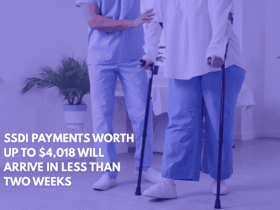In January 2025, President Joe Biden signed the Social Security Fairness Act into law, creating major changes that help millions of retirees across the United States.
This law repealed two old rules—the Windfall Elimination Provision (WEP) and the Government Pension Offset (GPO). These rules had been reducing Social Security benefits for public workers who also had private sector jobs covered by Social Security.
Thanks to the repeal, about 3 million people will now receive higher Social Security payments. The Social Security Administration (SSA) started sending out the updated and retroactive payments in April 2025, with distribution dates depending on each retiree’s month of birth.
Who Will Get a Social Security Increase After the WEP and GPO Changes?
The increases mainly apply to retirees who:
- Worked in public sector jobs like teaching, policing, or firefighting that were not covered by Social Security
- Are spouses or survivors who previously had their benefits reduced because of the GPO
Now, these groups will receive 100% of their calculated Social Security benefits.
Spouses and survivors, whose benefits were previously cut if they received a public pension, will now get their full payments without reductions.
First adjusted payments were made in April 2025, including retroactive payments dating back to January 2024.
How Much Will Payments Increase?
Beneficiaries affected by the WEP will see an average increase of $360 per month in their Social Security benefits.
Meanwhile, those affected by the GPO will see their benefits go up by $700 to $1,190 each month, depending on their specific situation.
Additionally, retroactive payments will cover missed amounts from January 2024 to the present. The size of the retroactive check depends on when the person retired and their work history.
Future monthly checks will continue to include annual cost-of-living adjustments (COLA) to keep up with inflation. Importantly, the SSA is managing these changes automatically, meaning retirees don’t need to fill out any extra forms—the increased amounts will be directly deposited into their linked bank accounts.

Who Will Not Benefit From This Change?
Not all public employees will benefit from the new law. Only those who receive a pension from a job not covered by Social Security will see an increase.
According to federal data, about 72% of state and local workers are already in Social Security-covered jobs, so they were never affected by the WEP or GPO rules.
Also, this law does not change benefits for federal employees, as their pensions are already fully connected to the Social Security system. Similarly, retirees who only worked in public jobs without private sector Social Security credits will not see an increase.
This reform mainly corrects past inequalities affecting a specific group of workers who built careers across both public and private sectors.
How to Maximize Your Social Security Benefit to $5,108 per Month
Even if you are not among the people receiving a WEP or GPO adjustment, there are still ways to boost your Social Security income.
To reach the maximum possible Social Security retirement check of $5,108 per month (for 2025), you need to:
- Delay your claim until age 70: For those born in 1960 or later, delaying retirement beyond your full retirement age (67) earns you an 8% increase for each year you wait, up to age 70.
- Work at least 35 years: Social Security calculates your benefits based on your 35 highest-earning years.
- Earn high wages: Each year, you should ideally earn at least the maximum taxable wage base, which is $176,100 in 2025.
If you have years with low earnings or gaps, zeros will lower your overall average, meaning a smaller retirement check.
Building a strong, steady work record over time and waiting to claim benefits are the two keys to unlocking the maximum Social Security payout.











Leave a Reply